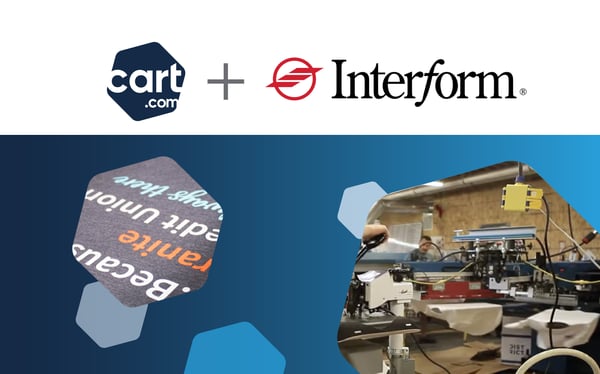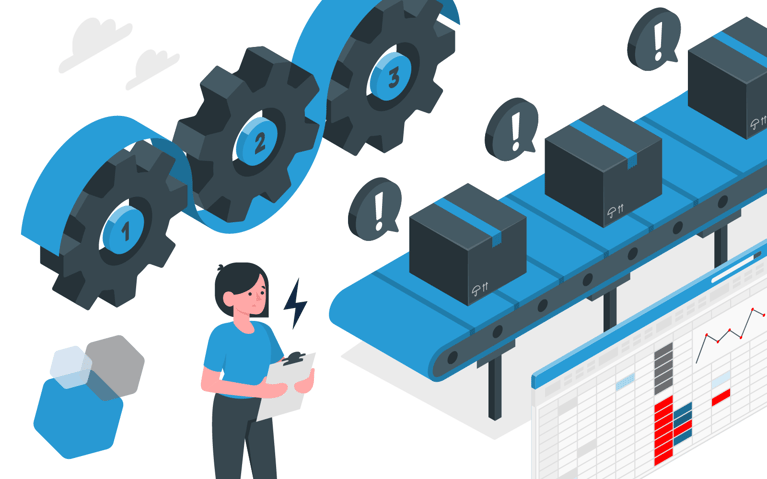As more shoppers are turning to ecommerce for their shopping sprees, demand for fast, efficient fulfillment is at an all-time high. Consumers expect their purchases to arrive at their doorstep within days – sometimes even hours – putting immense pressure on retailers and logistics providers to keep up with the demand.
As a way to meet consumers' growing expectations, businesses are turning to automation to streamline their fulfillment process and cut costs. However, automation isn't just a short-term strategy; it's necessary for organizations looking to stay competitive in an ever-changing market. The following sections will offer a closer look at the future of fulfillment and how organizations can leverage technology to boost efficiency, cut costs and meet growing demand.
Current challenges in fulfillment
Companies now face several fulfillment hurdles that didn't exist a few decades ago. For instance, due to the "Amazon 2-day Shipping" era, shoppers want deliveries to arrive either the same day or within 24 hours. This creates a challenges for brands struggling to keep up with current customer shipping expectations, especially without the same resources retail giants have,.
This dynamic change in consumer behavior has pressured fulfillment centers to move products quickly and accurately. With the addition of busy months and the peak season, managing the fulfillment process is more challenging today than ever.
While some organizations have tried to address the main issues by hiring more workers, there is still a labor shortage throughout the industry. The current costs of hiring and retaining workers are increasing, making it difficult for companies to scale their operations.
Is omnichannel retailing a challenge or opportunity?
Since the pandemic, customer expectations and buying behaviors have favored an omnichannel experience. Today, consumers expect a seamless experience across online and offline touchpoints. Although this can pose a problem for businesses with a traditional fulfillment system, it allows organizations to streamline a lot of their process to deliver a better customer experience.
With an omnichannel approach, companies can synchronize inventory and order management across channels to offer in-store pickup, curbside delivery or direct-to-consumer shipments.
The rise of automation in fulfillment
Automation used to be seen as a luxury by big corporations. However, in today's marketplace, it's necessary for even small businesses looking to compete in their industry.
Thanks to new technological advancements, fulfillment operations have evolved from manual to automated systems designed to handle repetitive tasks more efficiently. While some technologies have impacted automated fulfillment more than others, the main breakthroughs have been in the following categories:
- Robotics: Autonomous mobile robots (AMRs) and robotic picking systems speed up tasks like item retrieval.
- Artificial intelligence: AI-powered tools help with demand forecasting, inventory management and decision-making, ensuring that companies have the right products in stock and can fulfill orders quickly.
- Automated sorting and packaging: These systems help streamline the order-handling process to improve the item packing and shipping accuracy.
- Conveyor systems and automated storage and retrieval systems (AS/RS): These programs reduce the need for manual labor by transferring products from storage to shipping areas in an automated flow.
As the technologies listed above become more advanced, we should see an increase in hybrid systems where humans and machines collaborate on tasks. This partnership improves efficiency and boosts worker safety by reducing the physical strain of manual labor.
Key benefits of automation in fulfillment
Aside from staying competitive in the marketplace, bringing automation into your fulfillment process can have several benefits. For instance, an automated fulfillment system helps speed up the picking, packing, and shipping process by utilizing advantage technology and robots. It also helps reduce the need for manual labor, allowing companies to cut costs related to wages, training, and employee turnover. Automation also eliminates the human element, helping minimize errors and leading to fewer returns and corrections.
An automated fulfillment system can also be a great way to scale your organization. Generally, when order volume increases, the need for additional staff rises. However, through automation, you have the option to scale operations without increasing overhead costs like labor.
Future trends in fulfillment automation
As technology continues to evolve, the future of fulfillment will feature a robust lineup of automation tools and programs to help organizations maximize efficiency. Below are four trends that should impact fulfillment automation within the coming years.
AI and machine learning
One of the biggest impacts AI and machine learning will have is in predictive operations. Today, demand planners rely on historical sales data and fixed variables to create a forecast. However, with the power of AI, algorithms can analyze vast datasets in real time to produce more accurate predictions.
When forming their forecasts, some of the most advanced algorithms will consider seasonal trends, customer preferences, marketing efforts, weather patterns and supply chain fluctuations.
As a result of the added factor considerations, businesses can:
- More accurately predict demand
- Optimize inventory levels
- Reduce overstock or stockouts
Collaborative robots (Cobots)
Many facilities have already adopted robots into their workforce. However, collaborative robots represent the next phase of human-robot collaboration in fulfillment centers.
Unlike traditional robots that operate in isolation, cobots work alongside human employees, handling repetitive and physically demanding tasks like picking and packing or moving inventory. Cobots also have advanced sensors and safety features, enabling them to operate safely in shared spaces and making them a perfect fit in crowded or dynamic warehouse environments.
Drone and autonomous vehicle deliveries
Optimizing last-mile fulfillment has been one of the biggest hurdles over the past 10 years. Customers want faster deliveries with more visibility into when their purchases will arrive. While some companies have found a way to provide both to consumers, many businesses still need help.
One potential option for organizations is to use drones and autonomous vehicles to make deliveries faster, cheaper and more environmentally friendly.
Some companies like Amazon, Walmart and UPS have experimented with drones to expedite shipping. In some instances, customers could place an order on Amazon and receive their item within 30 minutes of ordering.
Sustainable automation
As sustainability continues to be a focal point for consumers and businesses, automation has opened the door for more eco-friendly fulfillment options. Automated systems can reduce waste, optimize energy use and streamline processes to minimize environmental impact.
For example, AI-powered systems can optimize packaging to use fewer materials, reducing the amount of cardboard, plastic, and other packaging waste generated by eCommerce orders.
Prepare for the future of fulfillment automation with Cart.com
Within the coming years, the future of fulfillment will focus on automation and introducing new technology. It may seem intimidating for companies with a mostly labor-powered operation to think about bringing robots, drones, or AI into the equation.
However, many organizations have successfully found ways to enhance their current operations and empower their employees with new capabilities. If you're looking into modern fulfillment technology or considering ways automation can improve your fulfillment strategy, a company like Cart.com is the next best step.
Cart.com offers proprietary cloud-based software that provides real-time visibility and control over orders, inventory and shipments. With advanced technology, organizations can monitor and manage their fulfillment operations anytime, anywhere.
Contact our team today to learn how we can help your team implement automation into your current fulfillment strategy.
Subscribe to our emails for the latest industry insights!
By entering your email, you agree to receive marketing emails from Cart.com








